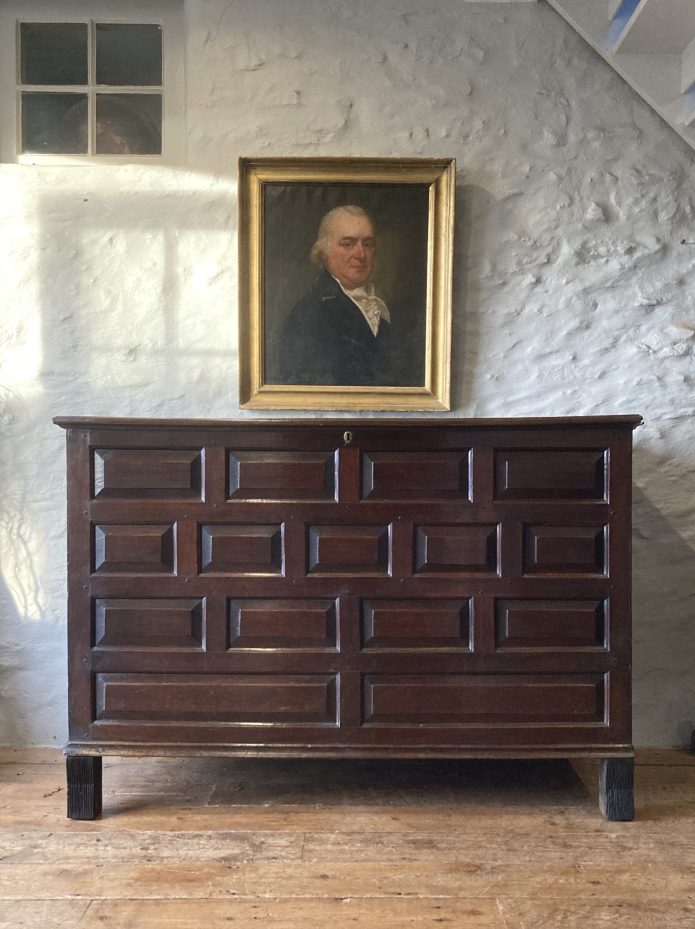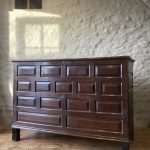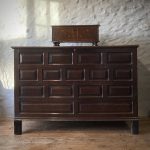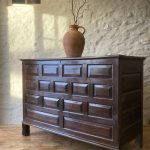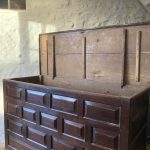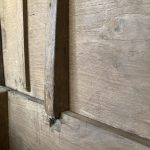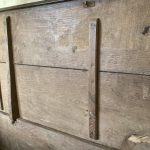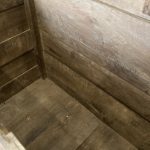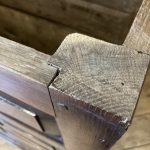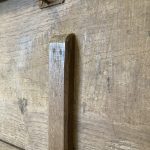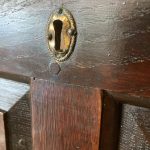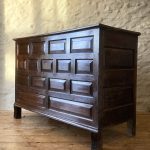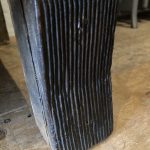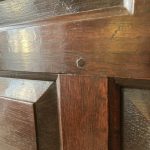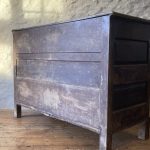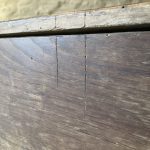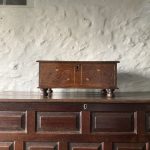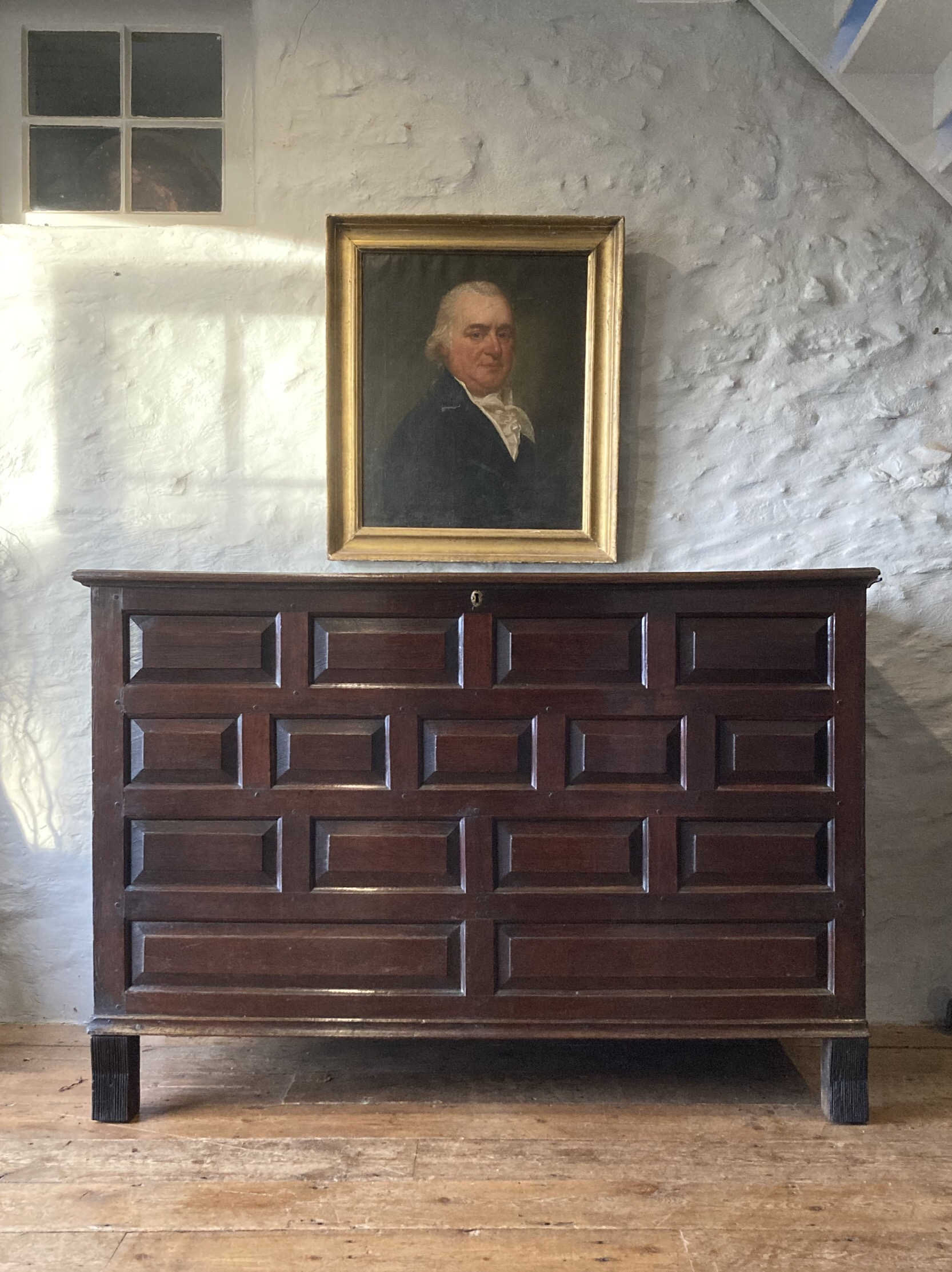A magnificent 18th century multi-panelled Welsh oak chest from Cadoxton, Neath, South Wales.
The chest is in very good condition with excellent rich colour. Original slot hinges and panelled throughout including the back. Unusual reeded front feet (one now replaced).
Wales Circa 1780
57” wide x 23” deep x 39½” high / 144.7cm wide x 58.4cm deep x 100cm high
Sold
Illustrated and discussed in Some Plain Oak Farmhouse Chests from South Wales by Luke Millar. Published by The Regional Furniture Society Vol VI 1992
Extract below:
…..“Figure 10, from a farm at Cadoxton, Neath, a late eighteenth-century piece of refined construction. The lid is of two boards joined with six dowels, cross-rails and hook-rail hinges. The crosswise bottom boards are covered outside with a cove moulding, and the comer post feet are covered by nailed-on concave reeded panels. One is missing, and in general the feet of these pieces are so vulnerable that they have usually gone, leaving bare comer posts with traces of old nailing. This piece also has a contemporary keyhole escutcheon, an oval plate indicating a date of 1780 or later.
Numbers of chests of this pattern occur, smaller ones having only three rows of panels. There is a tradition that such pieces were made from oak grown at Cwmbach in the Aberdare valley in Glamorgan, and they are certainly numerous in the adjoining Neath valley. The origin of the multi-panel style is obscure, but it certainly represents an economical use of timber, because the narrowness of the panels virtually eliminates problems of warping as well as shrinkage. This enabled plain-cut wood from small trunks to be used; to date no multi-panel chest has been recorded which shows quarter-cut, figured grain.”
And from “Welsh Furniture” by L Twiston-Davies & H J Lloyd-Johnes, published University of Wales press 1950 – “The exception, however, is an important one and is peculiar to Wales. This is a coffer, often of immense size, which was used as a tithe-chest (to store corn, etc charged as tithe), or more commonly as a grain bin to preserve grain or flour from the ravages of vermin”
A similar chest from is illustrated Welsh Furniture 1250-1950 by Richard Bebb, Saer Books 2007.



